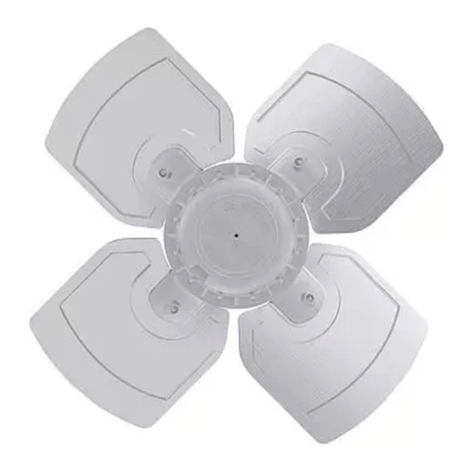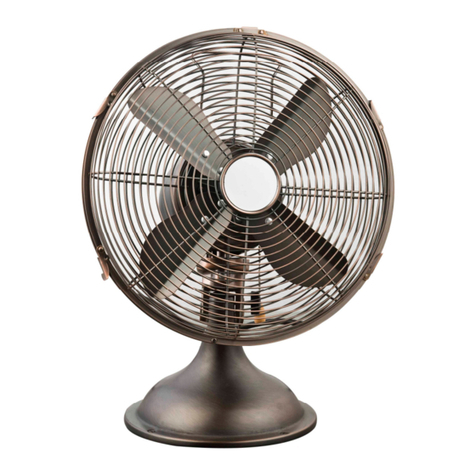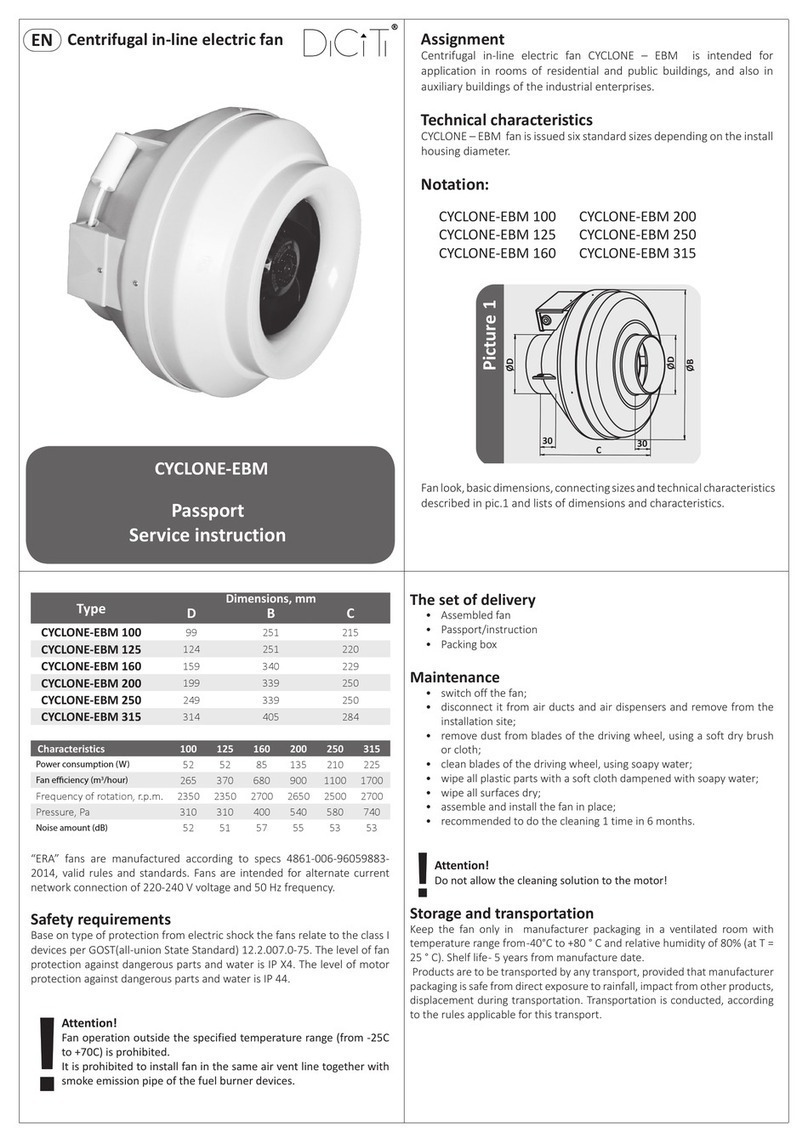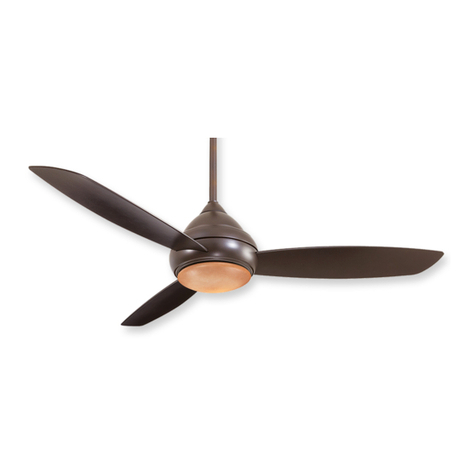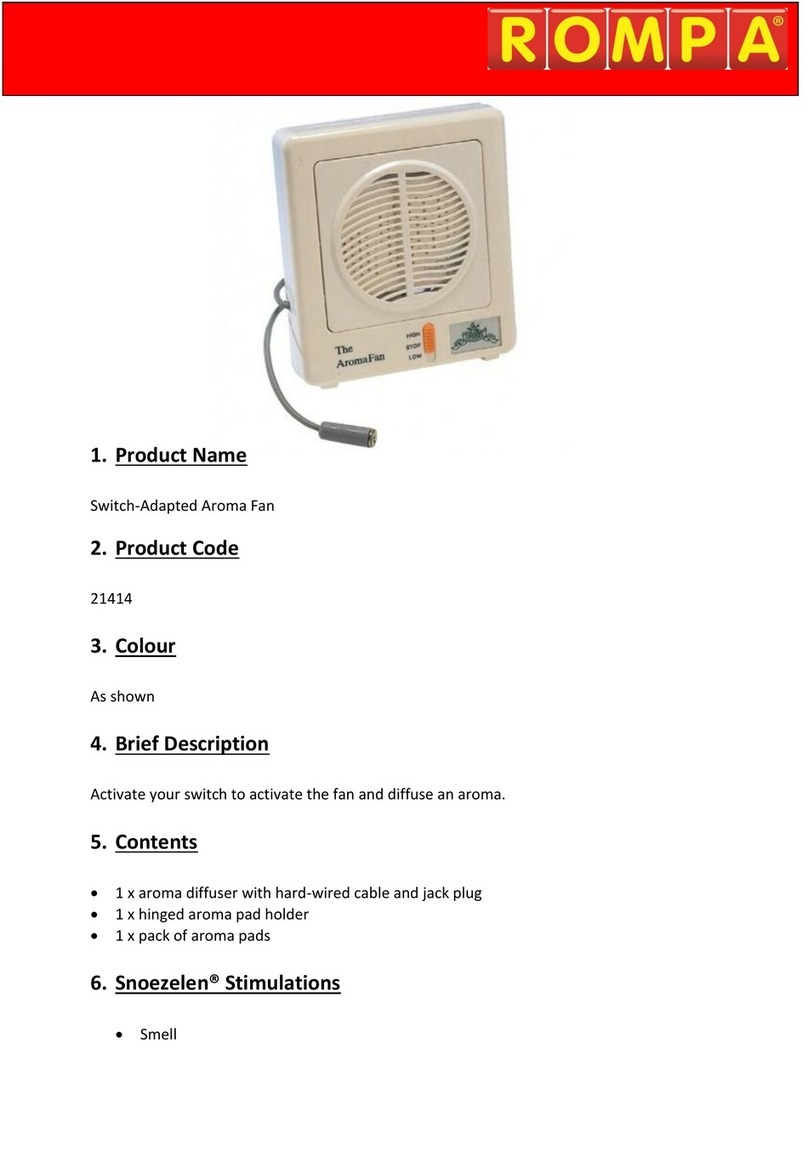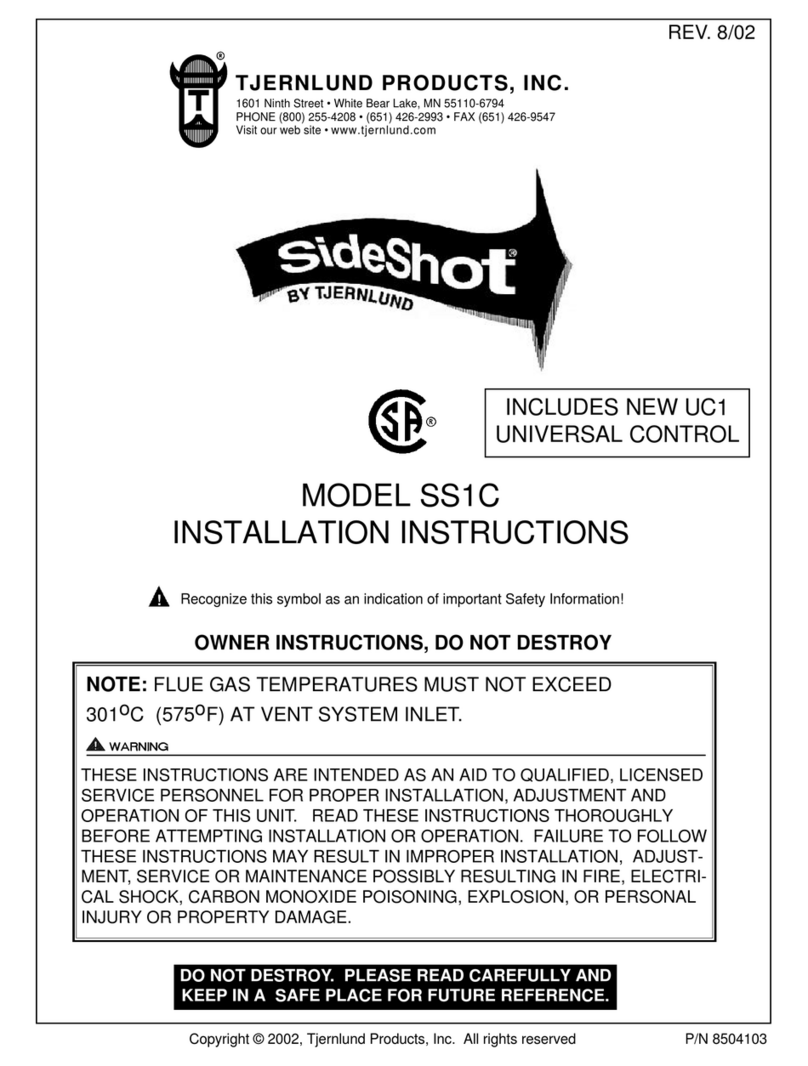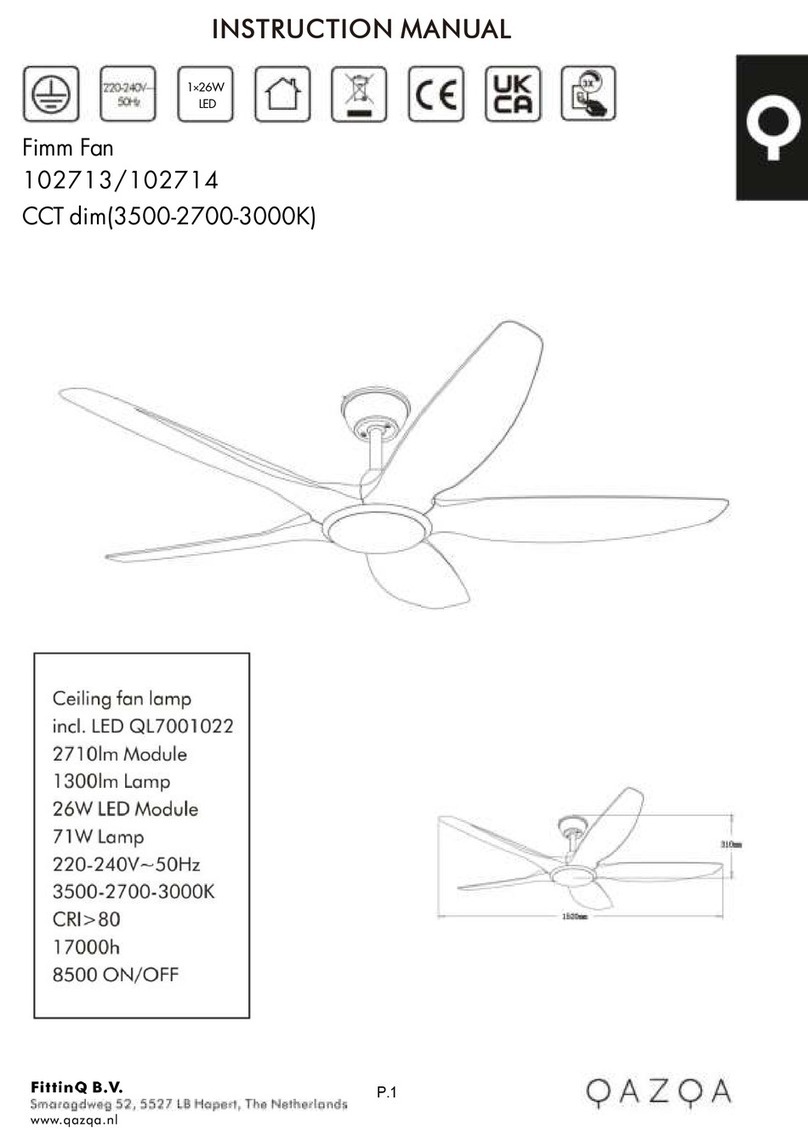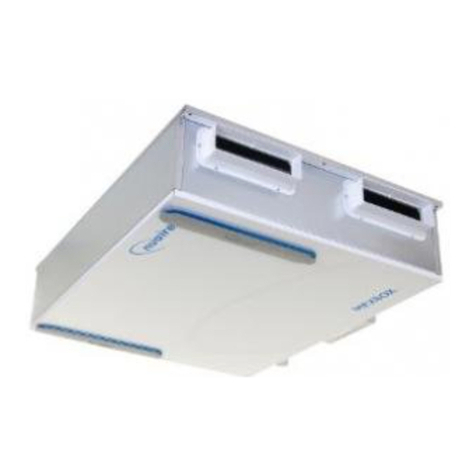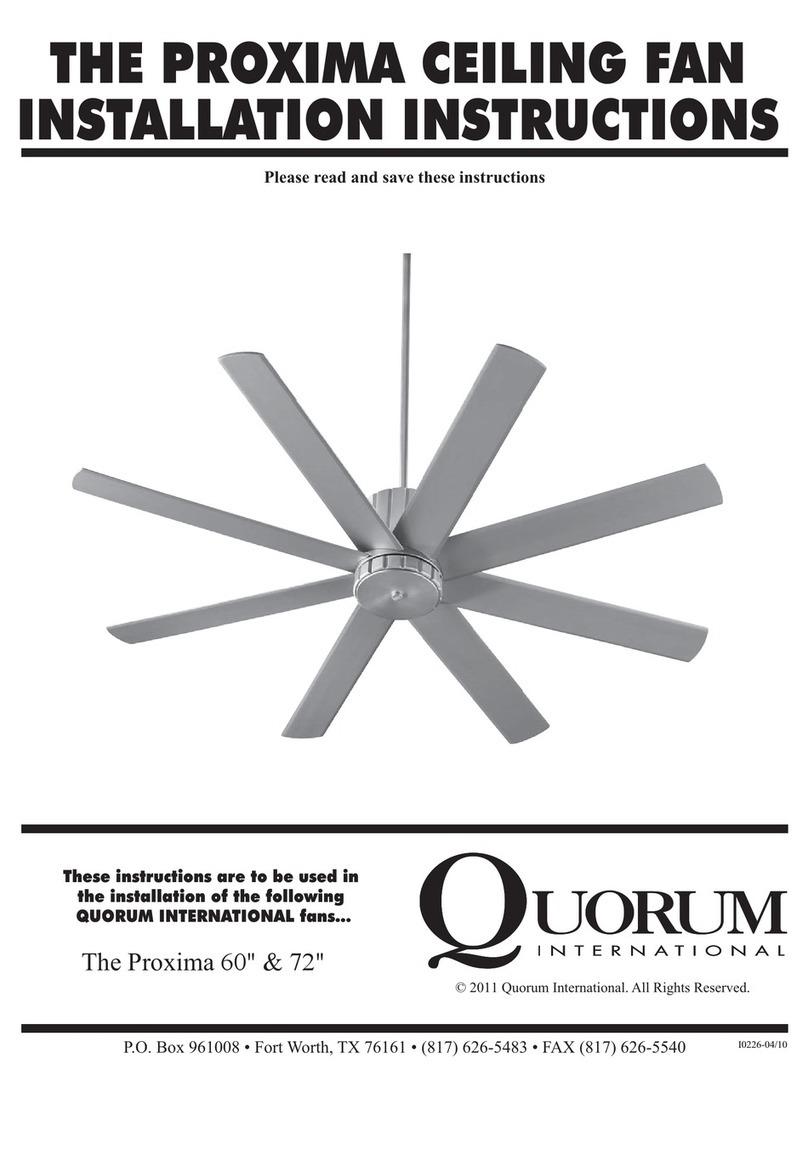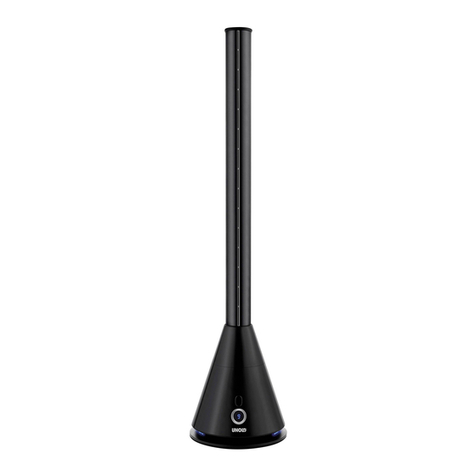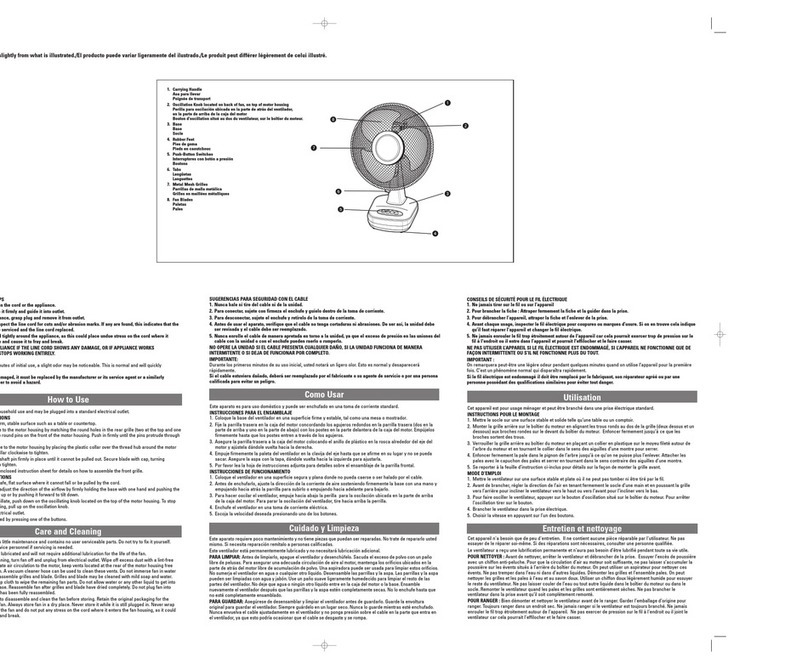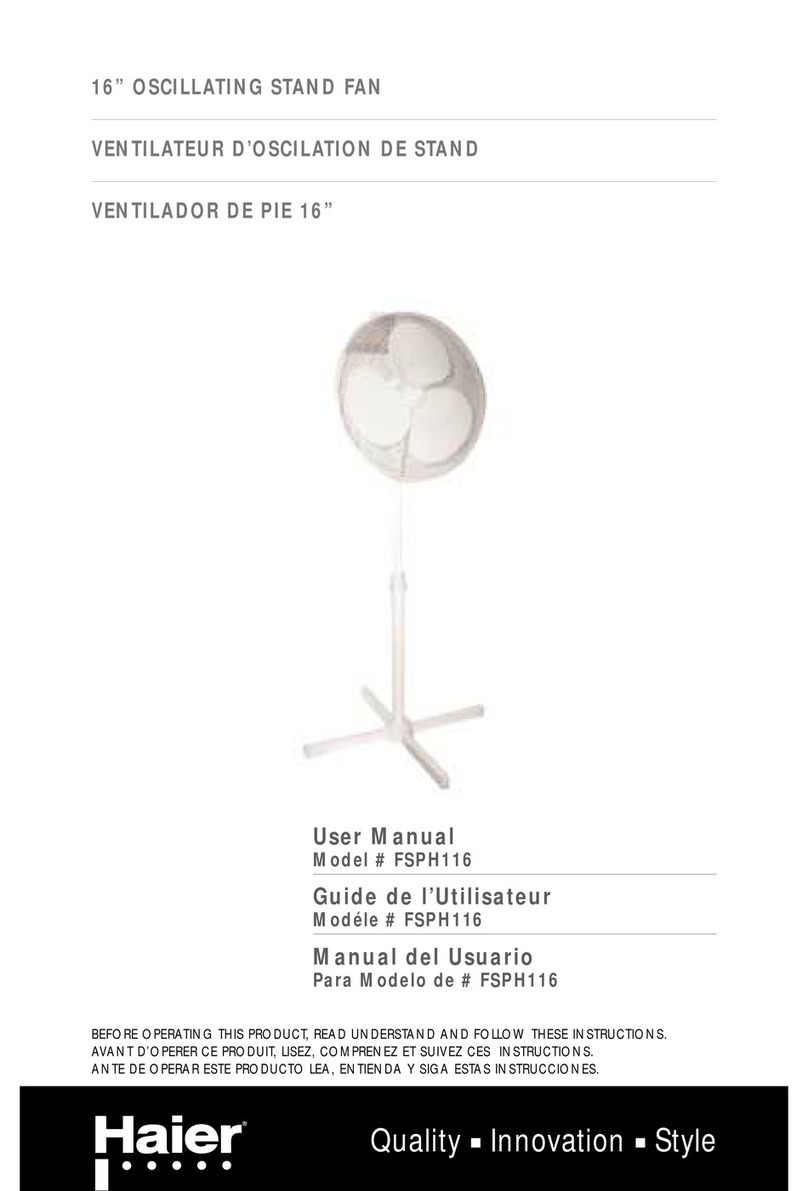
4
Step 6 — Install Indoor Ductwork System — To
maximize airflow in the ductwork system, all ducts should be
kept short and have as few bends or elbows as possible. Forty-
five degree elbows are preferred to 90 degree elbows. Use tees
instead of 90 degree elbows whenever possible.
All duct joints must be fastened with screws or duct sealant
and wrapped with a quality duct tape to prevent leakage.
Aluminum foil duct tape is recommended. Galvanized ducting
from the HRV to the living areas in the house is recommended
whenever possible, although flexible duct can be used in
moderation when necessary.
SUPPLY AIR DUCTING — In homes without a forced air
furnace, fresh air should be supplied to all high-usage rooms
including bedrooms and living areas. Air should be supplied
from high wall or ceiling locations. Grilles that diffuse the air
comfortably are recommended. To avoid possible noise transfer
through the ductwork system, a short length (approximately
12 in.) of nonmetallic flexible insulated duct should be connect-
ed between the HRV and the supply/exhaust ductwork system.
The main supply and return lines to and from the HRV must
be 6 in. minimum. Branch lines to the individual rooms may
be as small as 4 in., but 5 in. lines are preferred. If floor
installation is the only option available, then special care
should be taken in locating grilles. Installation areas, such as
under baseboard heaters, will help to temper the air. In homes
with a forced air furnace, it may be advisable to connect the
HRV to the furnace ductwork (direct connection).
Building Codes and Combustion Appliance Installation
Codes do not allow location of return air grilles or any opening
such as a breathing tee in an enclosed room with spillage
susceptible combustion appliances.
The fresh air inlet from the HRV must be a minimum
distance of 3 ft from the furnace return drop to ensure proper
air mixing and temperature at the furnace core.
Direct Connection — A direct connection requires that the
furnace fan run continuously. See Fig. 13. The fan may be
inter-linked electrically (low voltage) with the HRV accessory
control contacts for intermittent demand.
To hard duct the supply air directly into the cold air return of
the furnace, remember to check the airflow balance of the HRV
with the furnace fan both on and off to determine that it does
not imbalance the HRV more than 10%. Make sure that the
minimum distance from the supply air of the HRV to the
furnace is followed. Refer to the local and National Building
and Heating Codes for any variations in these notes.
EXHAUST AIR DUCTING — The stale air exhaust system
is used to draw air from the points in the house where the worst
air quality problems occur. It is recommended that return air
ducts be installed in the bathroom, kitchen, and laundry room.
Additional return air ducts from strategic locations (i.e., green-
house, atrium, swimming pool, sauna, etc.) may be installed.
The furnace return duct may be also used.
In this method, the exhaust air is not ducted back from
bathrooms, kitchens, etc. to the HRV with dedicated lines.
This method has become popular and provides good
ventilation when installed in accordance with the instructions.
The furnace blower must be running when the HRV is operat-
ing for this method to be effective.
INSTALL DUCTING — To install indoor ductwork, perform
the following:
1. Begin with the duct collar on the HRV marked Exhaust
Air In. Slide a short piece (12-in.) of flexible duct over
the duct collar. Using duct tape, tape the flexible duct
to the collar.
2. Run the flexible ducting to the main rigid duct trunk
line, which connects to the remainder of the ducts
going to and from rooms in the house. Repeat the steps
for the Supply Air Out on the side of the HRV.
3. Working from a closet, attic or inside joist wall, run the
length of ducting required for the proper grille location
and cut a hole in the wall.
4. Fasten the mounting collar (field-supplied) to the duct-
ing and fasten the collar to the wall or ceiling with
screws.
5. The field supplied grille may be adjustable. It is rec-
ommended that the grilles be completely opened at
first and then adjusted later as needed.
6. Push the grille into the mounting collar or directly into
installed elbow.
Fig. 11 — Seal Hoods
Fig. 12 — Outdoor Ducting Installation
FROM HRV
Fig. 13 — Direct Duct Connection
















